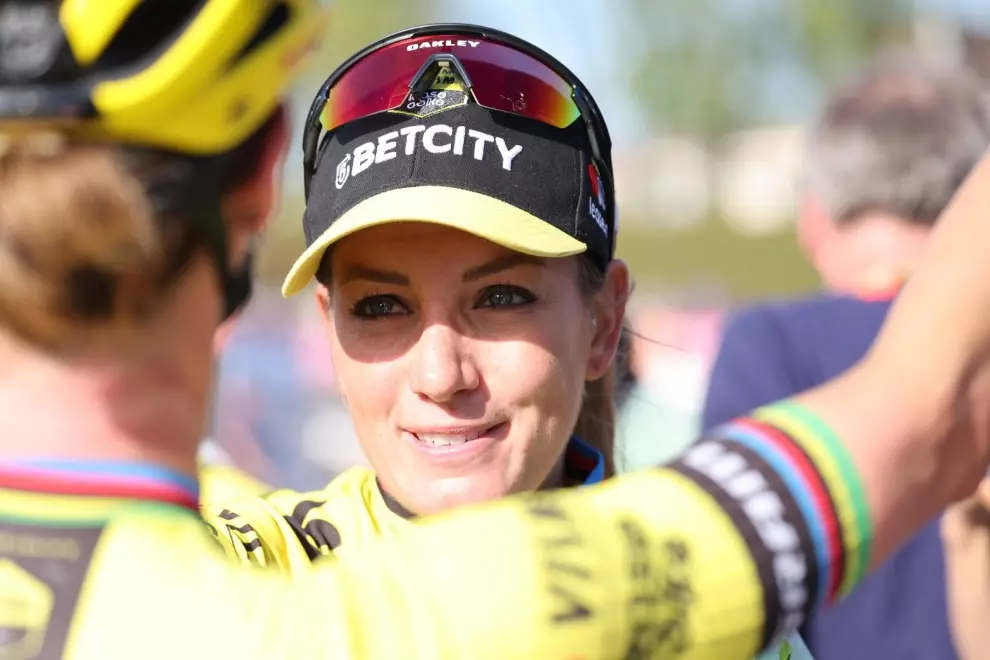Today, we shed light on the Tour de France from a woman’s perspective, delving into the stories of women who have played an essential role in making the race a reality. Moreover, we celebrate the memorable moments of how the Women’s Tour de France came to be, recognising the growing prominence of women in the sport and the legacy they are forging.
The pioneers who broke barriers
In the early years of the Tour de France, women’s participation was scarce, to say the least. However, this didn’t deter some extraordinary women from leaving an indelible mark on the event. One such trailblazer was Alfonsina Strada, an Italian cyclist who competed in the 1924 Tour de France. Strada’s unwavering determination led her to complete the race, despite being the only woman and facing numerous obstacles along the way. Indeed, it is safe to say that her legacy inspired generations of female cyclists and highlighted the potential for women to excel in professional racing.

A glimpse of what goes into the struggle for equality
In the subsequent years, the women’s Tour de France experienced a variety of iterations and attempted resurgences. Yet, in general, women’s Tour de France races have been inconsistent, underfunded, and often treated as a sideshow. The Tour de France Féminin in 1955 attracted 48 women riders, but they were seen more as a publicity stunt than true athletes. Media coverage and public attention were lacking, and the race didn’t continue after that year.
In 1984, a women’s race was again included but faced similar challenges. Despite riding portions of the men’s stages (and some truly mind-blowing performances), the women’s race went largely unnoticed, with minimal media coverage and limited recognition. It held on until 1989 before again disappearing from the racing calendar.
The woman who refused to take no for an answer
That said, the lack of a Tour de France for women in no way reflected the immense strides being taken by the women’s peloton. And naturally, the effort to establish a premiere race of their own among women’s cycling enthusiasts continued. In 2009, Kathryn Bertine, a former professional cyclist and journalist, reached out to the organisers, ASO, with a business plan to incorporate a women’s race into the Tour. In 2012, as she worked on a documentary about women’s professional cycling, she realised the collective desire for a women’s Tour was widespread. Bertine, along with Marianne Vos, Emma Pooley, and Chrissie Wellington, formed Le Tour Entier, a group that petitioned ASO to reintroduce a women’s race.
The introduction and expansion of La Course
Their efforts gained significant support, including nearly 100,000 signatures on an online petition. ASO eventually agreed to form a women’s race in the 2014 Tour de France. La Course by Le Tour de France, a one-day race held on the Champs-Élysées, was held as part of the Tour de France official programming. While proud of the progress, Bertine and her group hoped for further growth, suggesting the expansion of La Course over multiple days, eventually aligning with the men’s 21-day race.
In 2017, La Course introduced a two-stage format, featuring mountainous terrain to challenge the riders. This development reflected the growing recognition of women’s abilities and capacity to conquer demanding routes but fell short of the initial promise.
ASO cited logistical challenges and financial concerns as reasons for not expanding the women’s race. Despite the success and popularity of La Course, ASO claimed women’s races were not financially viable. The lack of commitment and growth frustrated advocates like Bertine, who believed ASO could have done more to support women’s cycling and create a lasting race. Thankfully, they stuck their course, waiting for the opportunity to make their vision a reality.
Donnons des Elles au vélo and InternationElles go ahead and prove that yes, they can!
And Bertine and her crew certainly had help in making their voices heard along the way! Established in 2015, Donnons des Elles au vélo is a group of female cyclists that rides the Tour de France stages one day ahead of the masculine peloton. The group was started by rider Claire Floret, who had decided that the lack of an official women’s Tour de France wouldn’t stop her from challenging her limits and seeing if she had what it took to complete the track. Alongside two other cyclists, she completed her first race in 2015 and has been going strong since — promoting female cycling at local, national and international levels.
Louise Vardeman, likewise, is the founder of the cycling team InternationElles, and has been a powerful advocate for a women’s Tour de France race. In fact, in 2019, her team undertook the ambitious task of riding the complete Tour de France route to raise awareness and push for gender equality. Through her ongoing work, she continues to emphasise the significance of young girls witnessing women competing in major competitions like the Tour de France, as it allows them to see what’s possible and inspires them to consider professional cycling as a viable career option.
Zwift sees potential and makes moves
Yet, it was only last year that we saw the first official Tour de France Femmes avec Zwift take place, and some of the circumstances that contributed to its eventual realisation might surprise you. A critical moment happened in 2020, when Zwift, a virtual cycling platform, approached ASO during the pandemic to organise a virtual race. The event featured men’s and women’s teams, with equal prize money and distances. Viewership remained consistent, and Zwift noticed the women’s racing was particularly exciting. This equity in the virtual race sparked discussions between Zwift and ASO about sponsoring a real women’s Tour de France stage race.
Ultimately, the collaboration between Zwift and ASO led to the creation of the Tour de Femmes avec Zwift, a modern-day, multi-stage women’s Tour de France.
If you’re reading this, you probably don’t need us to tell you what a historic success last year’s race was. The growing prominence of women’s cycling in the Tour de France marks a critical step towards equality and recognition and we have no doubt that as more women continue to break barriers, their presence will inspire even more women cyclists of future generations to dream big and conquer new heights.




